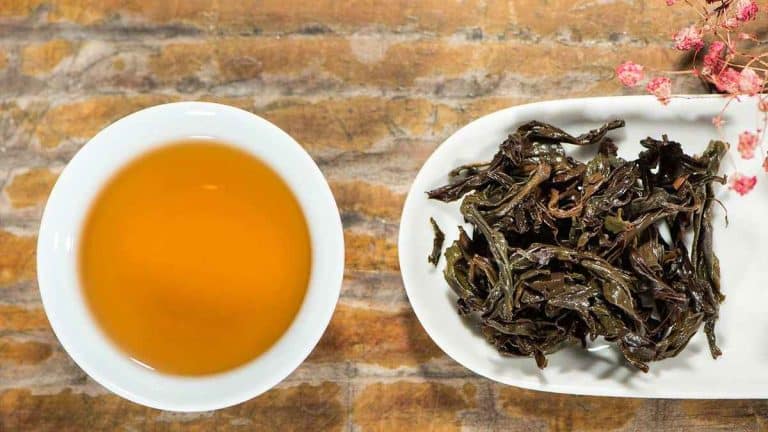Contents
1. Varieties and Characteristics of loose leaf oolong tea
loose leaf oolong tea is renowned not only for its unique semi-fermented process but also for its diverse varieties and distinct flavors, which have endeared it to tea enthusiasts. Its various health benefits further contribute to its worldwide popularity. Multiple varieties, such as Tie Guan Yin, Da Hong Pao, and Phoenix Dancong, each have their unique stories and characteristics.
i. Min Nan Oolong:
a. Anxi Tie Guan Yin:
Representing loose leaf oolong tea, Tie Guan Yin is highly praised for its delicate floral and fruity aroma. Depending on the processing technique, it is categorized into strong-flavored and light-flavored varieties. It’s noteworthy that Anxi is heralded as the birthplace of loose leaf oolong tea, boasting over 50 unique tea plant varieties.
b. Other Min Nan Oolongs:
These include Golden Cassia, Hairy Crab, Buddha’s Hand, Cinnamon, and Narcissus. Each tea type is distinct but mostly retains the fundamental features of loose leaf oolong tea, i.e., the semi-fermented process and its inherent aroma.
ii. Min Bei Oolong:
The primary production areas are in the northern part of Fujian Province, including Wuyi Mountain City, Jian’ou City, and Jianyang District of Nanping City. Min Bei is rich in tea plant varieties, touted as the “Tea Variety Kingdom” of China. Broadly, there are Wuyi Rock Teas and Min Bei Narcissus.
a. Wuyi Rock Tea:
A highly popular loose leaf oolong tea, known for its vast variety and rich taste. The four most famous rock teas are Da Hong Pao, Tie Luo Han, Bai Ji Guan, and Shui Jin Gui. Especially, Da Hong Pao, with its distinct “osmanthus aroma” and abundant legends, is esteemed as the “King of Teas”.
iii. Guangdong Oolong:
Fenghuang Dancong: Originating from Fenghuang Town in Chaozhou, Guangdong, this tea is renowned for its intense gardenia fragrance. As early as the last century, Fenghuang Dancong earned international accolades for its unique taste.
iv. Taiwanese Oolong
a. Dong Ding Oolong:
As a representative of Taiwanese loose leaf oolong teas, Dong Ding Oolong marries the traditional techniques of Fujian with the uniqueness of Taiwan, making it a tea art classic.
b. Oriental Beauty:
Also known as “Bai Hao Oolong”, this tea stands out among other Taiwanese oolongs because of its unique sweet aroma and light roasted flavor, often mistaken for black tea.
No matter if it’s the traditional Anxi Tie Guan Yin, the legendary Da Hong Pao, or the uniquely flavored Fenghuang Dancong, each loose leaf oolong tea variety possesses its charm and narrative. From the production process to the tea plant varieties, from the origin to the taste, loose leaf oolong tea offers a rich experience and choices, ensuring every tea lover finds their perfect cup.
2. Health Benefits of loose leaf oolong tea:
a. Basic Components and Benefits:
loose leaf oolong tea contains catechins, caffeine, amino acids, and tea polysaccharides. Among these, catechins offer antioxidant properties, helping to neutralize free radicals, thereby slowing cell aging and preventing various diseases.
b. Effects of Caffeine:
The caffeine content in loose leaf oolong tea varies depending on the roasting level. For teas roasted at high temperatures, such as Da Hong Pao, the caffeine content is lower, which minimally affects sleep. However, some loose leaf oolong teas might have caffeine attached to their surface, releasing more caffeine during the initial steep. For a lower caffeine intake, discard the first infusion.
c. loose leaf oolong tea and Blood Lipids:
Lightly fermented loose leaf oolong teas, like Tie Guan Yin, are rich in epicatechin and have been proven to have significant lipid-regulating effects. Meanwhile, highly fermented loose leaf oolong teas like Da Hong Pao, similar in efficacy to black teas, promote peripheral blood circulation and warm the body.
d. Anti-radiation and Anti-allergy:
Recent studies have shown that loose leaf oolong tea can help the body combat radiation and allergic reactions. In particular, loose leaf oolong teas containing methylepicatechins show potent anti-allergic activities.
e. Bone Health:
Preliminary studies have also found that loose leaf oolong tea may help prevent osteoporosis, although research in this area continues.
3. Selection and Consumption:
To maximize the health benefits of loose leaf oolong tea, proper selection and consumption methods are crucial. For regulating blood lipids, lightly fermented teas like Tie Guan Yin might be the best choice. For those seeking warmth during colder times, Da Hong Pao or other heavily fermented loose leaf oolong teas are more appropriate. If you’re aiming for low caffeine intake, consider selecting teas like Da Hong Pao that undergo high-temperature roasting, but remember to discard the first steep.
In conclusion,
loose leaf oolong tea is not just a delicious drink but also a healthy choice. Whether you drink it for health reasons or just to savor its taste, loose leaf oolong tea promises unexpected benefits.

